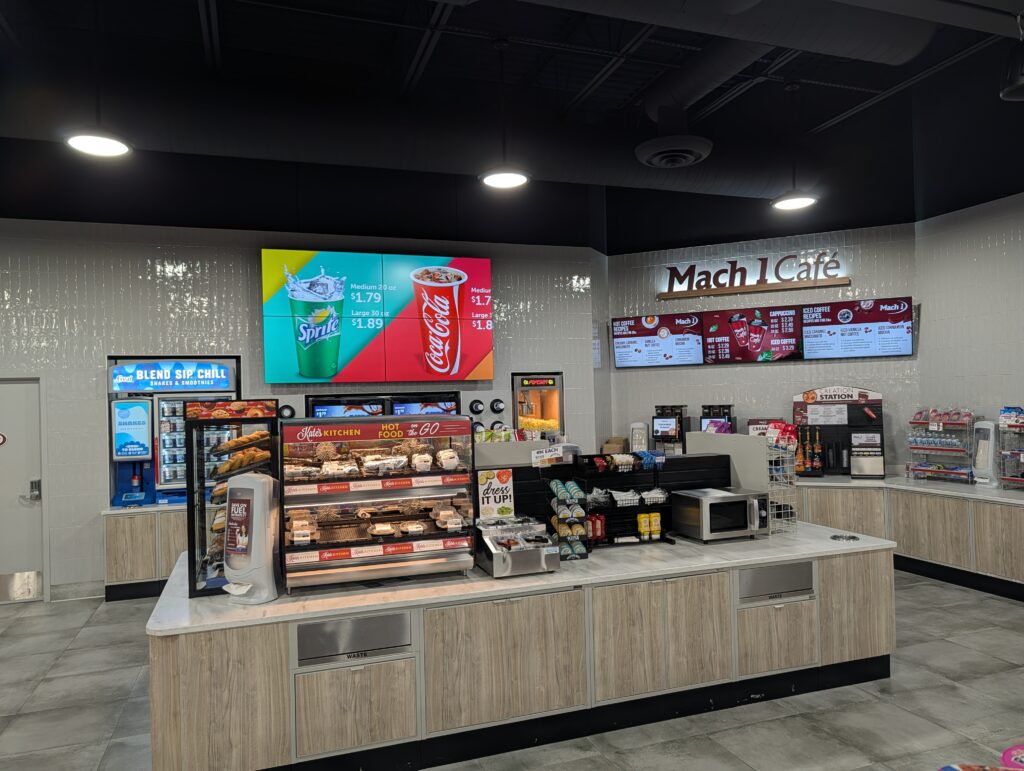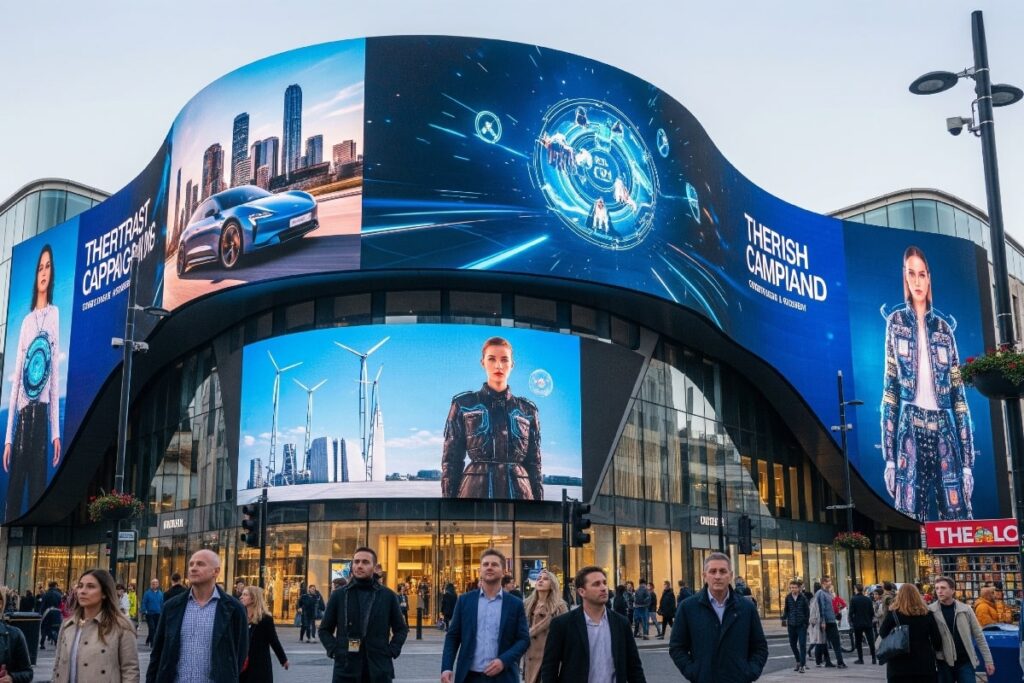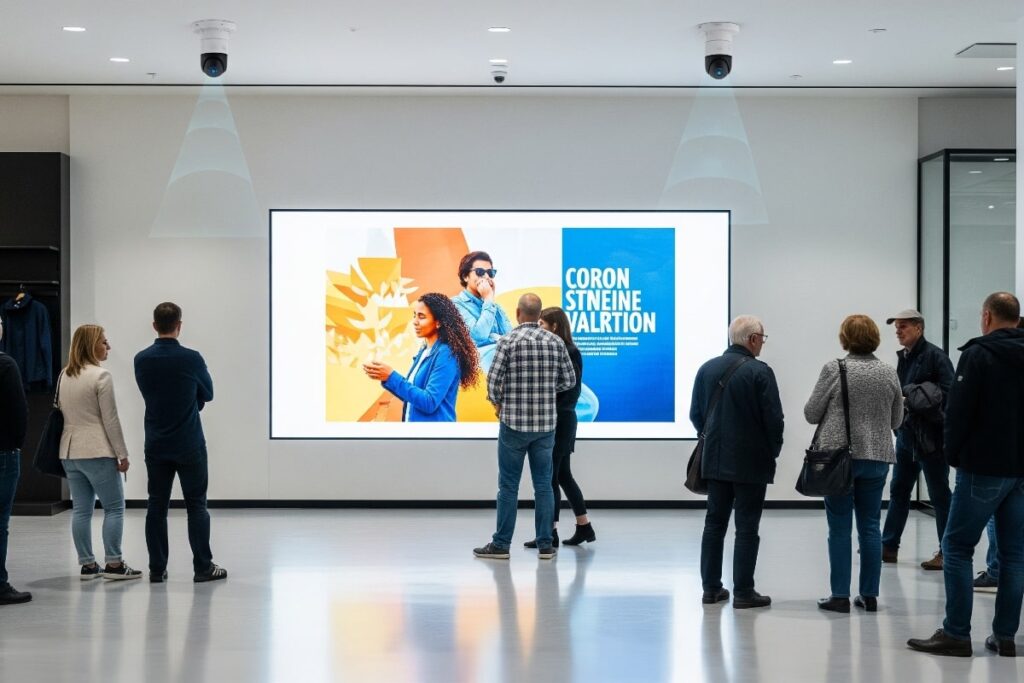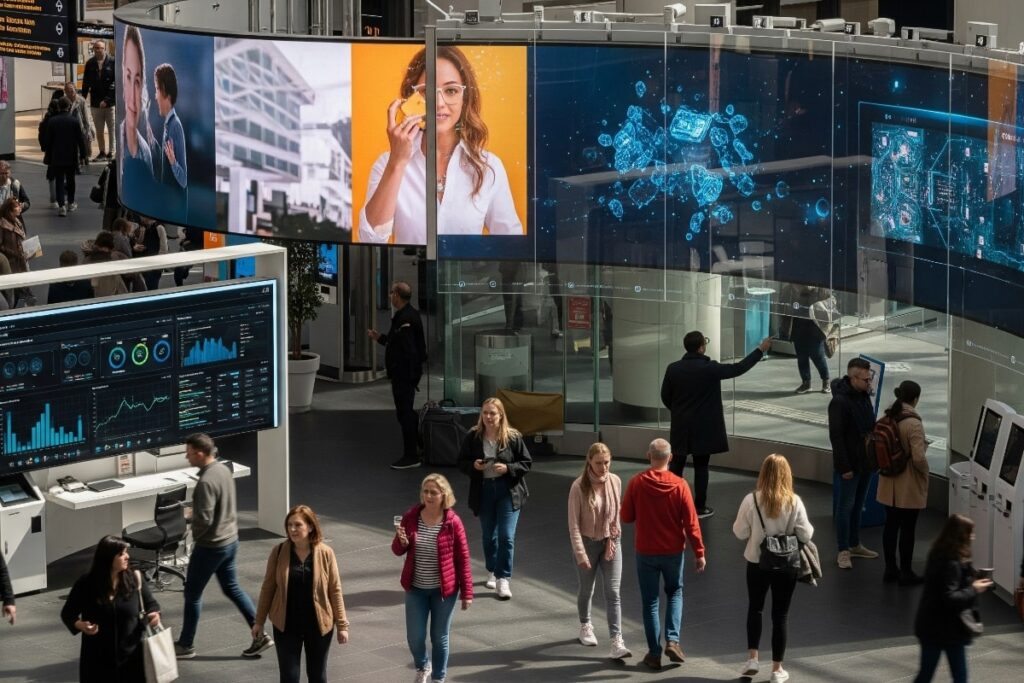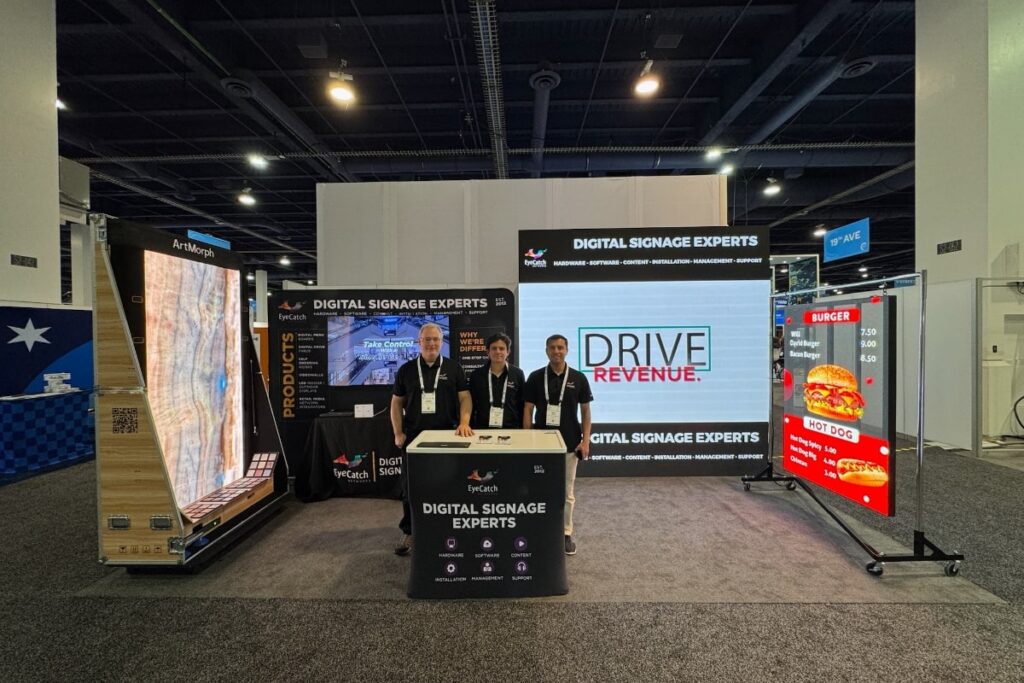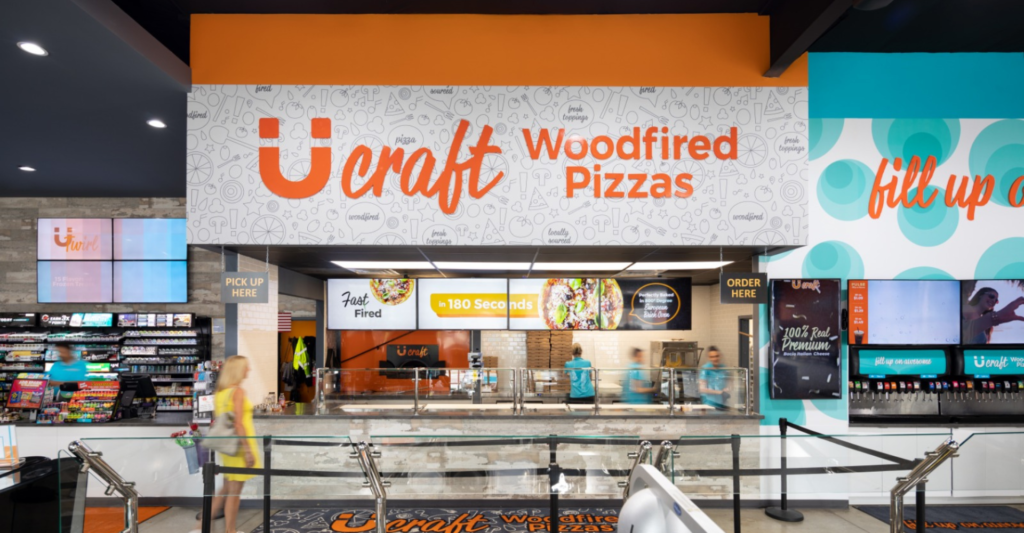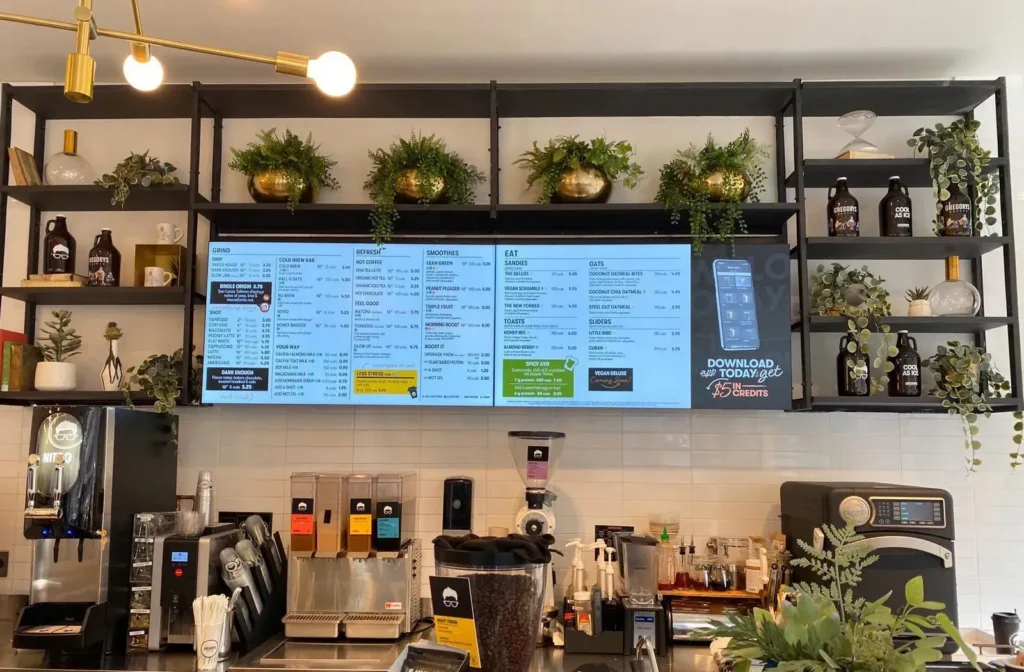Running a restaurant in today’s world means keeping up with the latest technology. One of the best tools for modern restaurants is the digital menu board. These screens display your menu in a digital format, bringing new life to the way customers see your food and drink offerings. Digital menu boards are much more than just screens—they’re a way to enhance the dining experience, attract attention, and make menu updates easier. Here’s a closer look at the key benefits of using digital menu boards in your restaurant.
1. Easy to Update and Change
One of the biggest advantages of digital menu boards is how easy they are to update. In a traditional menu setup, changing prices, adding new dishes, or removing items can be a hassle and may even require printing new menus. With a digital menu board, you can make instant updates with just a few clicks. Whether it’s adjusting prices or adding a seasonal item, digital menu boards save you time and keep your menu fresh. Plus, if you have multiple locations, you can update all menus at once, keeping everything consistent.
2. Capture Customer Attention
In a busy restaurant or cafe, getting customers’ attention can be tough. Digital menu boards are visually engaging and can display high-quality images, videos, and animations that capture attention instantly. With bright colors and rotating images, you can showcase your most popular or new items in a way that stands out. The dynamic nature of a digital menu for restaurants keeps customers interested and can make the ordering process more enjoyable.
3. Boost Sales with Targeted Promotions
Digital menu boards allow you to promote specific items and boost sales with targeted marketing. For example, you can feature high-margin items, like special drinks or desserts, during peak hours. You can also create a “happy hour” display or highlight combo meals and add-ons, encouraging customers to spend a bit more. By promoting specific items at the right time, digital menu boards can help increase revenue while enhancing the customer experience.
4. Improve the Ordering Experience
A well-designed digital menu board makes it easy for customers to read and choose what they want. With clear sections, attractive images, and easy-to-read fonts, digital menus reduce confusion and help customers make quicker decisions. When customers can see high-quality images of menu items, it can increase their desire to order, especially if they see something they hadn’t considered. This improved ordering experience can lead to happier customers and faster service.
5. Reduce Perceived Wait Time
No one enjoys standing in line or waiting for service, but a digital menu board can make the wait feel shorter. By displaying engaging content, digital menu boards keep customers entertained while they wait. Some restaurants even include fun facts, trivia, or special promotions on their digital menus to keep customers occupied. The result? Less frustration during busy times and a better overall experience for your guests.
6. Enhance Your Brand Image
Using digital menu boards shows that your restaurant is forward-thinking and embraces modern technology. In a competitive market, every detail matters, and having a sleek, digital menu board adds a level of sophistication to your restaurant. Digital menu boards can also be customized to match your brand’s colors, style, and personality. For example, if you run a cozy cafe, you might choose a warm, rustic theme, while a fast-casual restaurant might use a clean and minimalist look. By reinforcing your brand image, digital menu boards help create a memorable experience for customers.
7. Reduce Printing Costs and Waste
With traditional menus, any change to your menu could mean printing new versions, which leads to extra costs and more waste. Digital menu boards eliminate the need for constant printing, making them an eco-friendly option. Not only does this help save money in the long run, but it also reduces paper waste, which is a plus for the environment. Many customers appreciate eco-conscious efforts, and using digital menu boards can be a simple way to show your commitment to sustainability.
8. Increase Flexibility for Different Times of Day
Digital menu boards give you the flexibility to adjust your menu based on the time of day. You can easily switch from a breakfast menu to a lunch or dinner menu without any hassle. This feature is especially helpful for restaurants with separate menus for different meals. With digital boards, you can schedule menu changes in advance, so the right menu displays automatically at the correct time. This makes the dining experience smoother for customers and easier for staff.
9. Highlight Nutritional Information and Special Dietary Options
As more people become health-conscious, displaying nutritional information has become a valuable addition to restaurant menus. Digital menu boards allow you to display calorie counts, nutritional details, or symbols for vegetarian, vegan, and gluten-free options. This helps customers make informed choices, which can be a deciding factor for those with dietary restrictions or preferences. Providing this information upfront can also improve customer satisfaction and demonstrate that your restaurant cares about their needs.
10. Better Control Over Menu Display and Layout
With a digital menu board, you have full control over the display and layout of your menu. You can arrange items by category, highlight specials, or use larger text for popular dishes. This flexibility allows you to create a menu layout that makes sense for your restaurant and maximizes appeal. You can even adjust the brightness, colors, and text size to ensure visibility and readability. Having control over your menu’s appearance means you can create an inviting and easy-to-navigate menu that enhances the customer experience.
11. Increase Customer Engagement with Seasonal and Holiday Themes
One unique feature of digital menu boards is the ability to adjust the theme or look of your menu based on seasons or holidays. For instance, you could add festive colors and designs for holidays like Christmas or Halloween, or use a summer theme to promote seasonal drinks and specials. This keeps the menu interesting and adds a fun, personalized touch that customers will enjoy. It’s a simple way to make your restaurant feel festive and inviting, especially for families and groups.
12. Easy Integration with Other Restaurant Systems
Digital menu boards can often be integrated with other restaurant systems, such as point-of-sale (POS) systems. This integration makes it easier to track sales and update menu items based on what’s popular or what’s available. Some systems even allow you to set up automatic updates for menu items that are out of stock, helping reduce frustration and improving communication between the kitchen and customers. By syncing your digital menu board with other restaurant tools, you can streamline operations and make daily management easier.
Final Thoughts on Digital Menu Boards
Investing in digital menu boards can bring many benefits to your restaurant, from enhancing the customer experience to saving on printing costs. With their flexibility, visual appeal, and ability to boost sales, digital menu boards are a smart addition to any restaurant looking to stand out. Whether you run a casual eatery or an upscale dining spot, digital menu boards can make your restaurant more efficient, modern, and inviting.
So, if you’re considering an upgrade, digital menu boards offer a powerful way to make a lasting impression on your customers while improving your restaurant’s daily operations. In today’s competitive restaurant industry, embracing digital technology can help you stay ahead and keep customers coming back for more.
